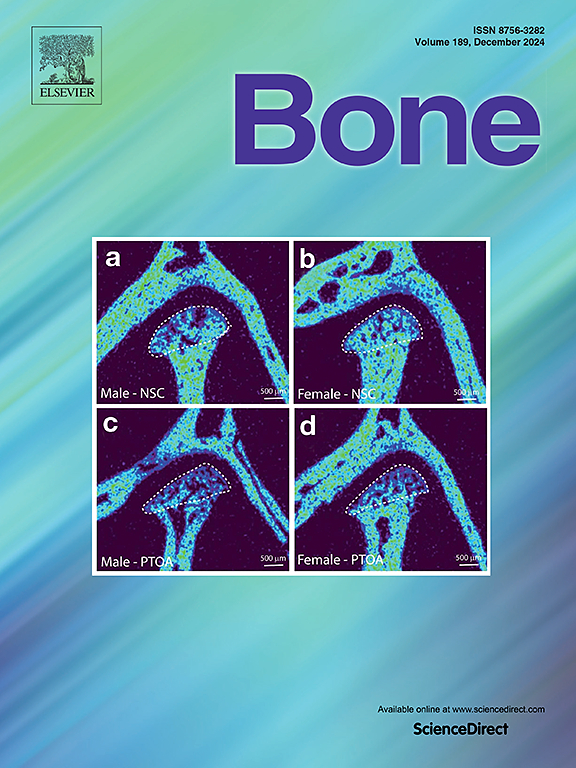无骨发育不全儿童下颌骨结构分形分析。
IF 3.6
2区 医学
Q2 ENDOCRINOLOGY & METABOLISM
引用次数: 0
摘要
目的:无晶状体发育不全症(AI)是一种影响乳牙和恒牙结构组成的遗传性疾病。AI基因突变,尤其是FAM83H基因突变,可降低成骨标志物表达,损害骨矿化。本研究旨在评估AI儿童牙科全景x线片的放射形态指标和分形维数(FD),并确定与对照组相比的差异。研究设计:该研究涉及12名AI患者和12名年龄和性别匹配的健康个体。下颌皮质指数[1]。评估评分,并使用ImageJ对髁突、角状和牙间区域的选定区域进行分形分析,计算FD值。对正态分布变量采用Student t检验,对非正态分布变量采用Mann-Whitney U检验,对分类变量采用卡方检验进行统计分析,p值 结果:FD值分析显示右侧有显著差异,其中对照组的FD值高于AI患者(p = 0.011髁状和膝状区域,p = 0.041齿状区域)。左侧未见明显差异。MCI,两组最常见的评分为C1,分布无显著性差异(p = 0.667)。结论:AI患者下颌骨FD低于健康人,且右侧更明显。结果表明,人工智能不仅会影响牙釉质,还会影响下颌骨结构。本文章由计算机程序翻译,如有差异,请以英文原文为准。
Fractal analysis of mandibular bone structure in children with amelogenesis imperfecta
Objective
Amelogenesis imperfecta (AI) is a hereditary disorder that affects the structure and composition of primary and permanent teeth. Genetic mutations of AI, especially in the FAM83H gene, can reduce osteogenic marker expression and impair bone mineralization. This study aims to assess radiomorphometric indices and fractal dimension (FD) in dental panoramic radiographs of children with AI and to identify differences compared to control subjects.
Study design
The study involved 12 patients with AI and 12 age- and gender-matched healthy individuals. Mandibular Cortex Index [1]. scores were assessed, and fractal analysis using ImageJ was conducted on selected regions from the condyle, gonial, and interdental areas to calculate FD values. Statistical analyses were performed using the Student t-test for normally distributed variables, the Mann-Whitney U test for non-normally distributed variables, and the chi-square test for categorical variables, with p < 0.05 considered statistically significant.
Results
Analysis of FD values revealed significant differences on the right side, where controls exhibited higher FD values than AI patients (p = 0.011 for condyle and gonial regions, p = 0.041 for dentate region). No significant differences were observed on the left side. Regarding MCI, the most common score was C1 in both groups, with no significant difference in distribution (p = 0.667).
Conclusion(s)
It was found that the FD of the mandibular bone in AI patients was lower than in healthy individuals and this was more pronounced on the right side. The results suggest that AI may affect not only tooth enamel but also the mandibular bone structure.
求助全文
通过发布文献求助,成功后即可免费获取论文全文。
去求助
来源期刊

Bone
医学-内分泌学与代谢
CiteScore
8.90
自引率
4.90%
发文量
264
审稿时长
30 days
期刊介绍:
BONE is an interdisciplinary forum for the rapid publication of original articles and reviews on basic, translational, and clinical aspects of bone and mineral metabolism. The Journal also encourages submissions related to interactions of bone with other organ systems, including cartilage, endocrine, muscle, fat, neural, vascular, gastrointestinal, hematopoietic, and immune systems. Particular attention is placed on the application of experimental studies to clinical practice.
 求助内容:
求助内容: 应助结果提醒方式:
应助结果提醒方式:


